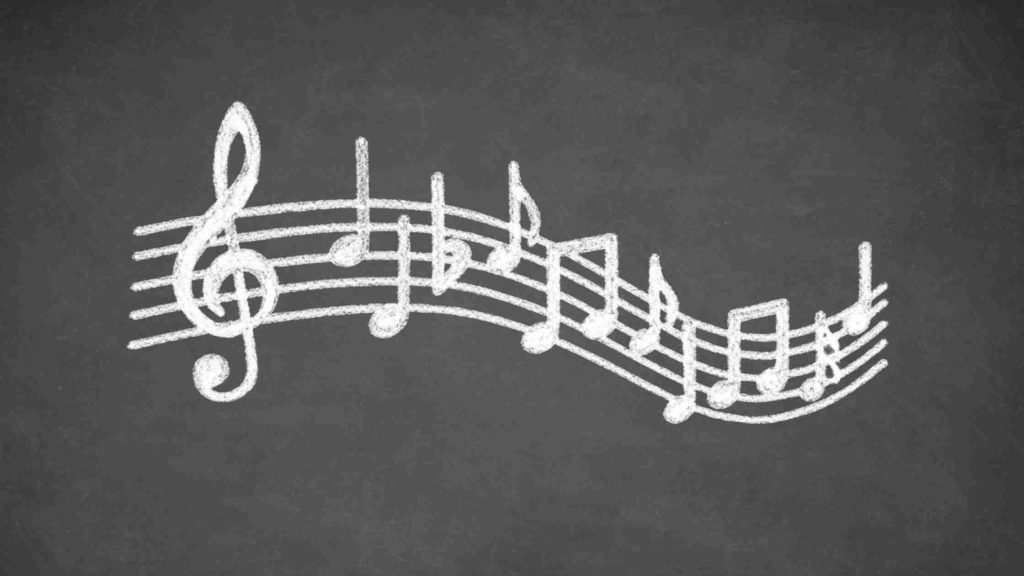What are the names of guitar strings? If you want to learn and play guitar then these are the basics. Once you get used to tuning and playing you will move into more complex territory. As a beginner, this is important to know as this will set the platform to understand notes, chords, and scales all along the fretboard for you to learn and master as you progress.
Disclosure: We’re an affiliate. We hope you love the products we recommend! This post contains affiliate links. If you use these links to buy the products, we may earn a commission from the qualified sales. These are at no additional cost to you. Thank you if you use our links, we really appreciate it!
Strings of a Guitar
Most guitars have six strings. There are guitars with seven and eight strings which are used for modern rock and metal. In order to produce music, the strings need to be tuned. The most common tuning is called standard tuning.
The names of the guitar strings and Standard Tuning

The standard guitar tuning is E A D G B E or in other words, these are also the names of the guitar strings. The guitar strings are also called by their position on the fretboard.
For example, the first string is at the bottom of the fretboard (the last string you see on the fretboard when you hold the guitar) and the sixth is at the top (the first string that you see when you hold the guitar).
So, starting from the top, the guitar strings are also called by their position such as 6th, 5th, 4th, 3rd, 2nd, and 1st.
Now, if you combine both, it looks something like:
- 1st String – High E – Thinnest String of the guitar.
- 2nd String – B – second thinnest string of the guitar.
- 3rd String G – The third thinnest string of the guitar.
- 4th String D – The third thickest string of the guitar.
- 5th String A – The second thickest string of the guitar.
- 6th String Low E – The thickest string of the guitar.
Why do you need a standard tuning?

At the foundation of music creation, you have scales. A scale is made up of a number of notes. When these notes are used in certain combinations, they make a Chord, for example D Major.
Let’s try to understand this a little more.
The different notes on the fretboard are denoted by letters of the alphabet from A to F and is called an Octave.
Between most of the notes of the octave, you can have half a note (called a flat or sharp depending from where you are referencing the note but essentially both mean the same). There are 2 such notes which do not have a half note in between their next note.
These 2 notes are E and B. So, between E & F and B & C there is no half note.
So, the notes look like the following:
- A
- (A# or Bꙺ )
- B
- C
- (C# or Dꙺ )
- D
- (D# or Eꙺ )
- E
- F
- (F# or Eꙺ )
- G
- (G# or Aꙺ )
- A
This background is important to understand.
Helps in Playing Chords
Now, with the background of the octave, if you want to play a major chord, then you will have to use three notes in a combination to create the major chord sound. The notes in a major chord are the 1st, 3rd, and 5th.
The first note is the root note. This is the note of the major chord you will play. For example, for a D major chord, the root note is D.
There are 7 notes in a D major scale.
D – E – F# – G – A – B – C#
Count from D, the third note of the octave, which is F#. This becomes the second note among the three we need. Lastly, find the 5th note from D which is A, and which is our third note to complete the D major Chord.
So, if you need to play a D major cord then you will have to use these 3 notes D, F#, and A.
Why I am explaining this is, the standard tuning provides standard finger positions on the fretboard for chords.

For example, the same D major basic playing position on a fretboard is:
- Index finger on the 2nd fret of the G (3rd) string
- Middle finger on the 2nd fret of the E (1st) string
- Ring finger on the 3rd fret of the B (2nd) string
The above finger positioning is the universal D chord positioning on any guitar as long as the instrument is tuned per the standard tuning.
So, tuning the guitar as per standard tuning helps you to seamlessly move from one guitar to the other.
Helps in Playing Solos
Just like playing chords, playing solos would also mean that you use the right notes on the fretboard as per the scale. There are many different scales. For example the pentatonic scale. The standard tuning helps us to locate these notes on the fretboard easily helping us to play the same solo on different guitars with ease.
Enhances Playing Style and Dynamics
Good guitar playing is not static sounding. A good guitar player will use his techniques to mute sounds, bend strings to reach the next note, sometimes use forceful strumming while sometimes be subtle and mellow.
To help a guitarist achieve his signature style and enhance his playing dynamics, the standard tuning provides the right tension and flexibility of the strings so that a guitarist is able to achieve this without any challenges.
For example, if the first string is tuned to a high F instead of E for a solo that has multiple bends, can result in breaking the string.
What is the standard tuning for a Bass Guitar

Unlike a six-string guitar which is used for rhythm and solo, a bass guitar is used along with the drums to provide a structure to the song. Bass guitars normally have 4 strings (you also get bass guitars with 5 and 6 strings as well).
The standard tuning or the names of the strings of a bass guitar are E A D G. Essentially the same tuning as that of a six-string guitar but without the first and second string.
What are the other kinds of tuning?
Some musicians use modified tuning to suit the sounds of specific songs. Below are three examples of modified guitar tuning. There are many more used by guitar masters.
Drop D: In this tuning, the low E is tuned down by one whole key to D. This is primarily used in rock and metal guitar styles. The tuning here becomes D A D G B E. Good examples are” Spoonman” and “Blackhole Sun” by Soundgarden. Also, check out “All Apologies” by Nirvana.
Double Drop D: Just like Drop D of the sixth string, you also drop the first string to D as well. Here the tuning looks like D A D G B D. This tuning with 3 open D strings can be utilized by a seasoned guitar player for lush sounding acoustic or clean guitar sounds. Good examples are Jimmy Page’s guitar in “Going to California” or “The End” by the Doors.
DADGAD: This is used primarily by accomplished finger-style guitarists. This is a further improvisation on double dropped D where you drop the second string a full note to A in addition. You should listen to Led Zep’s “Kashmir” to hear what Jimmy Page does with this tuning. Simply brilliant!
How do you tune?
There are 2 possible ways to tune a guitar.
Electric Guitar Tuners
This is the most common way a guitar is tuned. These tuners come in various forms like Clip On, Pedal guitar tuners, Polyphonic etc.
Clip on Tuners: These tuners could be clipped on to the headstock of the guitar for tuning. Clip-on Tuners can tune both acoustic and electric guitars.
When a string is plucked, a good clip-on tuner will capture the frequency accurately and will display it on the screen. The guitar player then needs to tighten or loosen the strings to achieve the tuning which he desires.
Since you tune one string at a time, you can achieve different tuning options like Drop D or Drop C, etc with this tuner. The Korg AW-OTG Clip-on Tuner provides a very accurate tuning and at a great affordable price.
No products found.
Pedal Tuners: Pedal tuners help to tune the guitar just like the clip-ons, one string at a time. Since these are pedals, the guitar signals are sent to the tuner via a pick up through a guitar cable.
So this can only work with guitars that have pickups. Boss is a tried and trusted name in the guitar pedals space and the BOSS TU-3 Chromatic tuner is a reliable one to go for. Recommended.
No products found.
Polyphonic Tuners: These are more recent and TC electronics originally came up with this equipment. The polyphonic tuners can help to check all the strings at a given time together. You play all six strings together and the tuner can tell you which strings and where you are off. Try the TC electronic Polytune 3 mini and you will love it.
No products found.
Tuning by Ear
This is the old-fashioned way of tuning guitars. In this technique, you tune the first string to E. You can do this by someone giving you a reference E on the keyboard or through another tuned guitar.
After you have tuned the first string, the rest of the strings to be tuned by ear.
The open sound of the first string should match with the 5th fret of the second string.
To do this you need to press the string next to the fifth fret of the second string and pluck it along with the open E. The idea is to get both these positions sounding the same.
Similarly, the 4th fret of the 3rd string should match the open 2nd. There onwards the 5th fret of the 4th, 5th, and 6th string should match the open 3rd, 4th, and 5th strings respectively.
Tuning the old fashioned way helps to build the sense of pitch and helps in quick tuning when you don’t have an electric tuner handy.
Conclusion
Learning the names of the guitar strings is the first step in music theory. Building on this you will get to learn more about chords, scales, and soloing as you progress. Though standard tuning offers enough flexibility in creating great sounds, alternate tuning options are for those who want to take creativity to a new level. As you develop, you may want to create a small home studio to record your creations.
It is very important to be on tune and electric tuners are a very handy option. Even if you have an electric tuner, learning how to tune by ear equips you to tune your guitar in a jiffy or where you don’t have access to a tuner.
Last update on 2025-06-04 / Affiliate links / Images from Amazon Product Advertising API





